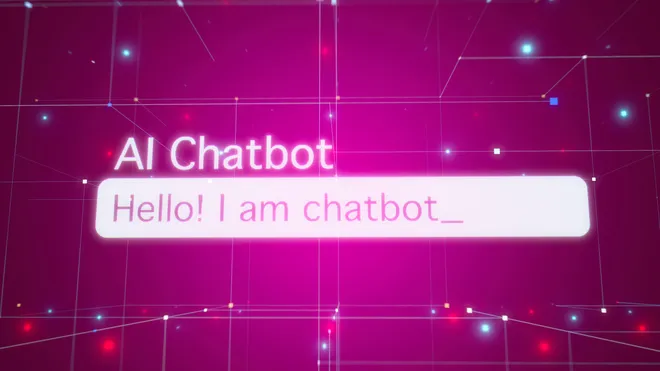In today’s fast-paced digital world, mental health care is becoming more accessible than ever. One of the latest innovations is chatbot therapy, a form of support provided by artificial intelligence (AI). These AI-powered tools offer users the ability to talk about their emotions and challenges, anytime and anywhere — no appointments, no waiting, and no judgments.
Sounds great, right? But while chatbot therapy is always available, it’s not without its risks. As more people turn to virtual support systems, it’s important to look at both the promises and pitfalls of using AI for something as sensitive as mental health.
In this article, we’ll explore what chatbot therapy is, how it works, its benefits and limitations, and what mental health professionals and users should consider before depending on it.
What is Chatbot Therapy?
Chatbot therapy refers to the use of AI-based programs that simulate conversations with a human therapist. These bots are trained to recognize emotional language and respond with supportive or therapeutic messages. Some popular chatbot therapy platforms include:
- Woebot – Designed to offer daily emotional support using cognitive behavioral therapy (CBT)
- Wysa – Combines AI support with optional human coaching
- Replika – A chatbot that mimics friendly conversations and emotional bonding
- Youper – A mental health assistant using AI to guide users through mood tracking and mental exercises
These chatbots are often accessible through apps or websites and claim to help with anxiety, depression, stress, and more.
Why is Chatbot Therapy Gaining Popularity?
There are several reasons why chatbot therapy is becoming popular
1. Available 24/7
One of the biggest advantages is that chatbot therapy is always “on.” You can talk to a chatbot at 2 AM when traditional therapists are unavailable.
2. Affordable or Free
Many chatbot services are low-cost or completely free, making mental health support accessible to those who may not afford traditional therapy.
3. Anonymity and Privacy
Some people feel uncomfortable talking to a human about their emotions. Chatbots offer a level of privacy and non-judgmental support that can help users open up.
4. No Waiting Time
Unlike traditional therapy where appointments can take weeks, chatbots offer instant support, which can be helpful during a mental health crisis.
How Chatbot Therapy Works
These AI chatbots use natural language processing (NLP) to understand what the user is typing. Some of them also use machine learning to improve over time. Here’s a basic breakdown of how it works:

- Input: The user types a message about how they’re feeling
- Processing: The chatbot analyzes the message, identifies emotional keywords, and matches it with a likely scenario
- Response: The bot responds with empathetic statements or suggests activities like breathing exercises, journaling, or CBT-based techniques
Some chatbots are guided by psychologists who design the conversation flows, ensuring they reflect real therapy principles.
The Positive Side of Chatbot Therapy
1. Helps Build Emotional Awareness
Chatbots can help users track their moods and recognize patterns in their behavior.
2. Encourages Daily Mental Health Practice
Many bots send reminders and motivational prompts that support healthy routines.
3. Great for Early Intervention
For people feeling slightly anxious or low, chatbots can offer useful early support before problems escalate.
4. Reduces Stigma
Because it’s anonymous, chatbot therapy can help people who are scared of judgment or don’t want to be labeled.
But… Here’s Why Users Should Beware
While chatbot therapy seems like a game-changer, it also comes with serious concerns.
1. Chatbots Are Not Human
AI lacks human intuition and emotional depth. It may not pick up on complex feelings or understand situations in context. This could lead to generic, sometimes inappropriate responses.
2. Limited in Crisis Situations
In a real mental health emergency, a chatbot is not equipped to provide proper help. It can’t call for immediate assistance or assess suicidal risk the way a trained therapist can.
3. Data Privacy Issues
When you share your thoughts and feelings with a chatbot, where does that data go? Some apps collect and store sensitive information, which raises privacy and ethical concerns.
4. Overdependence
People might start relying too much on chatbot therapy and avoid seeking professional help. For serious mental health conditions like major depression or PTSD, this can delay proper treatment.
Expert Opinions: What Therapists Say
Mental health professionals are divided on chatbot therapy.
Some believe it’s a helpful supplement to therapy, especially for those who can’t access regular counseling.
Others warn that these tools oversimplify complex human emotions and can give a false sense of support.
“AI can be a bridge — not a replacement — for real therapy,” says Dr. Nina Patel, a clinical psychologist. “It’s great for low-level emotional support but has clear limits when it comes to human understanding.”
When Is It Safe to Use Chatbot Therapy?
Chatbot therapy can be safe and effective when used in the following ways:
- For mild stress or low mood
- As a daily self-care tool
- To build journaling or mindfulness habits
- For emotional check-ins between traditional therapy sessions
When You Should Avoid Relying Only on Chatbots
Chatbot therapy should not be your only source of support if:
- You have thoughts of self-harm or suicide
- You are dealing with trauma, abuse, or addiction
- You are diagnosed with severe mental health disorders
- You feel worse after using the chatbot
In such cases, always reach out to a licensed mental health professional.
How to Choose the Right Chatbot Therapy App
If you’re curious to try chatbot therapy, here are some tips:
- Check who designed it: Look for apps backed by therapists or psychologists
- Read reviews and privacy policies
- Test it for tone: See if the responses feel kind, helpful, and appropriate
- Use it as a tool, not a therapist replacement
Future of Chatbot Therapy
The technology behind chatbot therapy is advancing rapidly. With the rise of generative AI, future chatbots may become more human-like and emotionally aware. Some apps are also starting to integrate real-time therapist check-ins with AI support — offering a hybrid model.
But the key question remains: Will chatbot therapy ever fully replace human support? Most experts agree — not anytime soon. Emotional healing, empathy, and human connection are complex experiences that technology is still far from mastering.
Final Thoughts: A Useful Tool, But Use With Care
Chatbot therapy is a groundbreaking innovation in the mental health space. It provides instant, low-cost, and stigma-free emotional support — especially helpful for mild issues or early intervention.
However, users must remember that it has clear limitations. It’s not suitable for crisis situations, severe conditions, or long-term emotional healing. The best way to use chatbot therapy is as a supplement, not a substitute, for human care.
So, if you’re feeling stressed or overwhelmed, go ahead and try a chatbot. But also stay aware — and don’t hesitate to reach out to a real human when you need more than just typed responses.
Read Next – FDA Recalls ‘Deadly’ Tomatoes in Southern States Over Salmonella Risk





